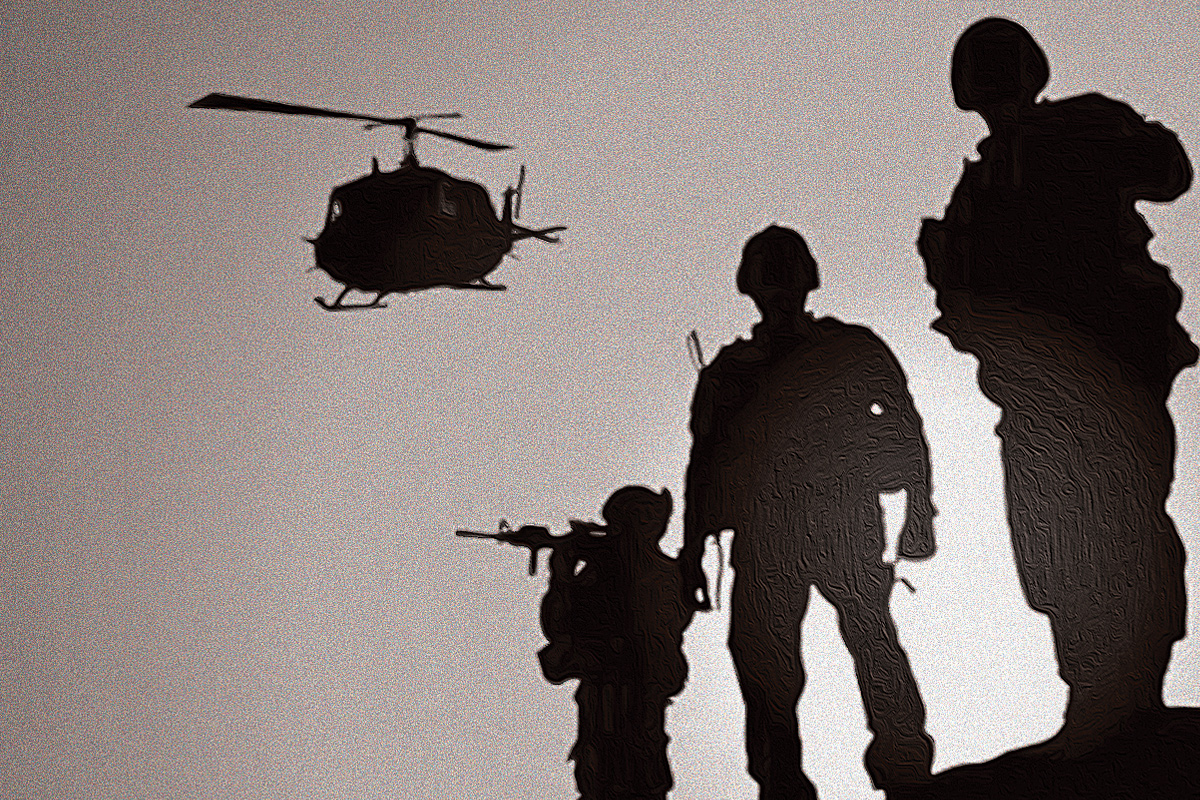
Why Afghanistan will not be the last
Years from now and possibly even decades later, the world will still be writing a post-mortem of America’s failed enterprise in Afghanistan. Military strategists, intelligence analysts, political pundits, diplomats and development gurus will still be grappling with questions like why did a 300,000-strong national security force – armed and trained at a colossal expense of $80 billion – simply melt away at the sight of ill-equipped bands of marauding insurgents? Why did billions more in development aid not buy the peace? Why did the West suddenly abandon its once grandiose nation-building project only to leave vulnerable partners and allies in the lurch?
Afghanistan has certainly lived up to its sobriquet ‘the grave of empires’. But Afghanistan is only the latest in a series of misadventures as far as war outcomes go. For all the chest-thumping and for all the dog-and-pony shows of military might across the world, in fact, most US-led interventions after World War II have failed to convincingly achieve their first order goals. Nor have they really kept the peace. The list keeps growing – Cuba, Vietnam, Laos, Lebanon, Iraq, Libya, Somalia, Syria, Venezuela, Yemen and now Afghanistan among many more if you expand your definition of ‘war’. One account has it that if you aggregate every covert, special operations against terrorism, the US is now involved in war-like actions in over 130 countries around the world.
Combat literature, both Western and Eastern, often leans in to all manners of righteous principles and high-minded theory to justify war. Some wars are morally ‘permitted’. Others are morally ‘required’. Yet, others are ‘optional’and ‘discretionary’. I will not dwell on how, in the pursuit of strategic interests, the US invariably blindsides itself into betting on the wrong horses. Nor how, before long, military objectives mutate, mission creep sets in, and exit-plans are shelved. Rather I will explore some uniquely American motivations – social, political and economic – that drive these endless entanglements as well as some indulgences only the US can afford. In essence, America intervenes because it can.
To uphold checks and balances the US constitution – on paper, at least – grants Congress the sole right to declare war. But US presidents have often flouted this separation of power and taken liberties to launch attacks without prior Congressional approval, to the point that the practice is now routine and generally accepted.Moreover, in the immediate aftermath of 9/11, the US passed a law that grants the president sweeping powers to use force against those determined to have carried out the attacks or harboured the attackers. Presidents since have liberally interpreted this law to suit their own purposes. Consequently, US presidents are now the least politically constrained of all democratically elected leaders when it comes to waging war.
War is a highly lucrative business. Seven of the world’s top 10 arms manufacturers are US owned. Together they have a combined annual revenue of nearly $200 billion. According to the US State Department, it manages $55 billion in arms sales on average every year in what we would call government-to-government (G2G) deals. It also manages another $115 billion a year in direct commercial sales (DCVs) to foreign ‘end-users’.In 1972, during the Vietnam War, President Nixon abolished the ‘draft’ – a practice that required every able-bodied American male aged 18-25 to serve war-time military duty. He replaced it with a voluntary military service. This made perfect sense for the time. Nixon desperately wanted to dampen mounting public opposition to the Vietnam war. As he saw it, an all-volunteer force did away with the morally-stinging problem of ‘conscientious objectors’ and the constant bad TV of anti-war activists and fearful parents vocally protesting the fate of their children. Meanwhile, it barely hurt Nixon’s treasury to pay inflation-adjusted wages and welfare benefits marginally better than the market as long as a steady supply of new recruits could be ensured. Ingenious as all this may appear, only eight years later following the 1980 Soviet invasion of Afghanistan, President Jimmy Carter signed a new law by which the US government could still induct 18 to 26-year-olds for active duty based on registration with the Selective Service System (SSS) – a contingency mechanism that now extends even to recent immigrants. Many young Americans still don’t seem to realise they are registering with the SSS or consenting to specialised military conscription when they apply for federal student aid (FAFSA) and government jobs. US popular culture lionises its war heroes and veterans. All cultures do, to varying degrees, but the US outdoes them all. In contrast to its failures at embodying and reflecting everyday prejudices in other important spheres of life, the US media and entertainment industries do portray, rather successfully, a seductive picture of Whites, Blacks, Hispanics and Asians gloriously fighting shoulder to shoulder to promote American ‘values’in the far corners of the world. One only needs to visit Arlington National Cemetery or the many war memorials dotted around Washington DC to observe how elegantly this theatre of liberty and sacrifice is performed. The sense of purpose and belonging this image inspires is definitely not lost on the historically disadvantaged and impoverished (by US standards) minority groups that compose the bulk of the army rank and file. Oftentimes, military service offers aimless adolescents the only way out of an otherwise inevitable life of despair. The prospects of upward mobility, social standing and self-worth are very real. War is a highly lucrative business. Seven of the world’s top 10 arms manufacturers are US owned. Together they have a combined annual revenue of nearly $200 billion. According to the US State Department, it manages $55 billion in arms sales on average every year in what we would call government-to-government (G2G) deals. It also manages another $115 billion a year in direct commercial sales (DCVs) to foreign ‘end-users’. Latest data compiled by the Stockholm International Peace Research Institute (SIPRI) show that the US commanded a 37% share of the global market in arms exports during the period 2015-2019, by far the largest among the world’s leading arms producers. Modern warfare also entails a bevy of allied industries including ‘phantom’ development aid, ostensibly meant to win ‘hearts and minds’ and help keep the peace. But the fact of the matter is that very little of this aid reaches the stated beneficiaries. The bulk is either wasted or siphoned off in generously padded administrative costs by private contractors employed by the donors. Even the US Congress’ Special Inspector General for Afghanistan Reconstruction (SIGAR) concedes that upward of 40% of the $200 billion in US reconstruction aid since 2002 ended up in the pockets of corrupt officials, warlords, criminals and insurgents. Only 10-15% actually ‘trickled down’ to the real beneficiaries. So, when the US says it spent $2 trillion on the Afghanistan campaign, one can easily see that some three-quarters was actually clawed back in US military spending and fat cuts to US corporations. Add to this melange the uniquely American institution of lobbyists, an open secret that legally allows special interest groups to peddle paid influence. Ironically, it was President Dwight Eisenhower, a World War II General, who first exposed the ‘military-industrial complex’ in the early 1960s that till today profits a very select few. Given its outsize influence in Washington, this nexus is now often called the ‘military-industrial-congressional-complex’. Finally, the US must be the only country in all of history – ancient, modern and contemporary – that has never had to fret over financing its overseas wars. Empires have collapsed as a result of financial ruin compounded by military over-reach. But, given the size, stretch and composition of its economy, financial bankruptcy has been among the least of concerns for US military strategists. Provided that its economy continues to perform reasonably well, the US can forever delve deeper into deficit financing to fund its campaigns abroad without Americans ever having to feel the economic pinch. In fact, former US President George W Bush is famously quoted during the Second Gulf War as saying the best service Americans can do for the war effort is to go on living their normal lives. His implied message was that as long as American consumers continued to consume, the US economy would hum along and the government could borrow endlessly. Two quotes broadcast on TV news have stuck with me since the fall of Kabul on August 16, 2021. In one, a Taliban militia commander says they fought for a just cause and they won whereas the Afghan Army fought for foreign money and they lost. In another, a former US military commander in Afghanistan says you can delude yourself into building a world-class army but you cannot buy courage. Both ring true. But both are besides the point.
Published Date: August 31, 2021, 12:00 am
Post Comment
E-Magazine

